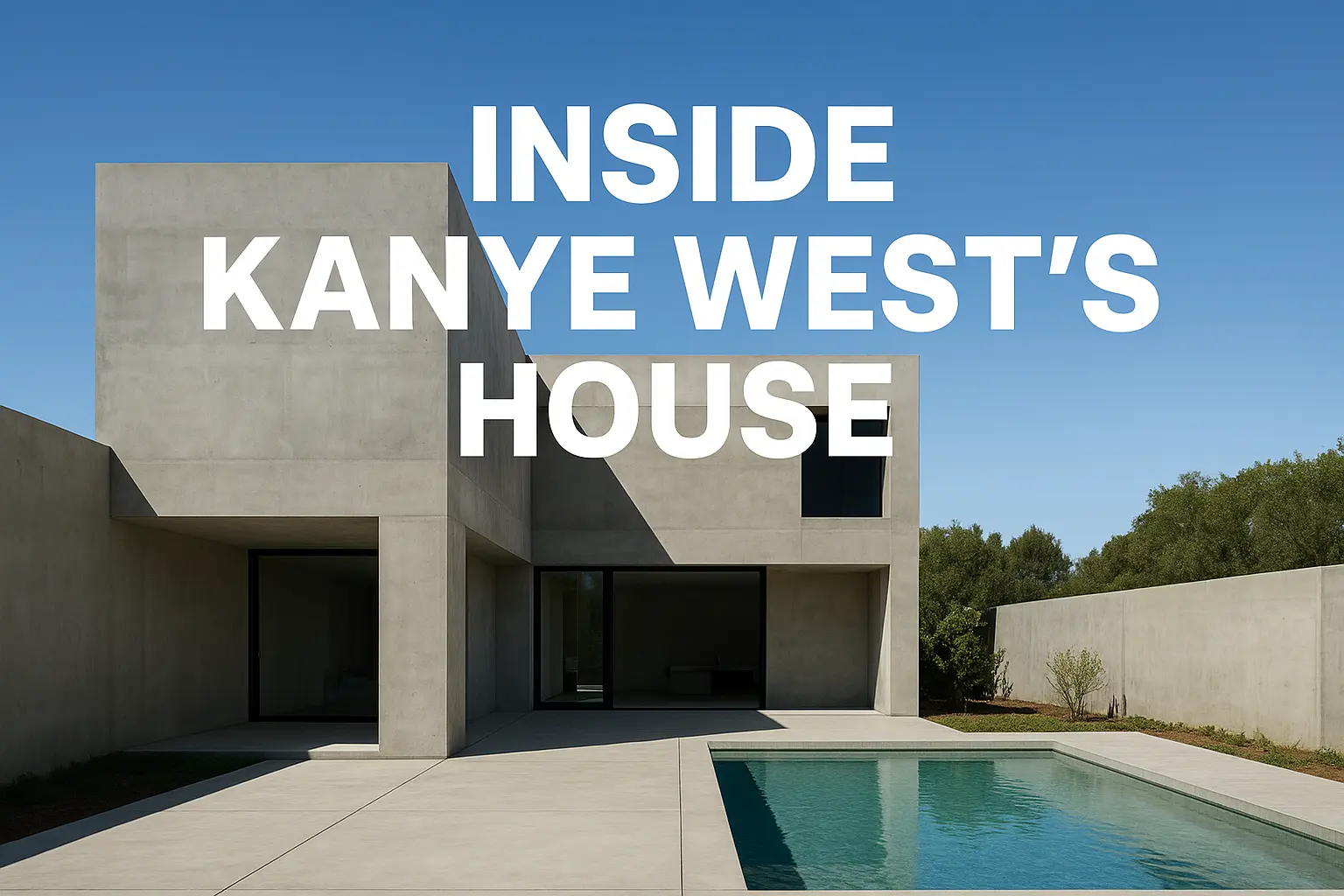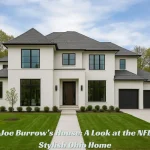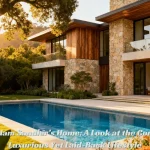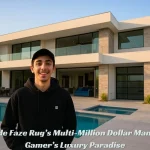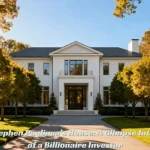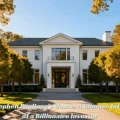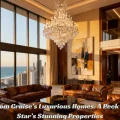Kanye West (now known legally as Ye) is one of the most famous names in music, fashion, and design. His homes reflect his ambition, creativity, and sometimes his controversies. They are more than places to live—they are statements.
In this article, we explore Kanye West’s houses — especially his Los Angeles / Hidden Hills home with minimalist design, his Malibu beach mansion, his new purchase in Beverly Hills, and what all that tells us about his style and life. I’ll also share what stands out and what I think really gives a home personality.
Where Does Kanye West Currently Live?
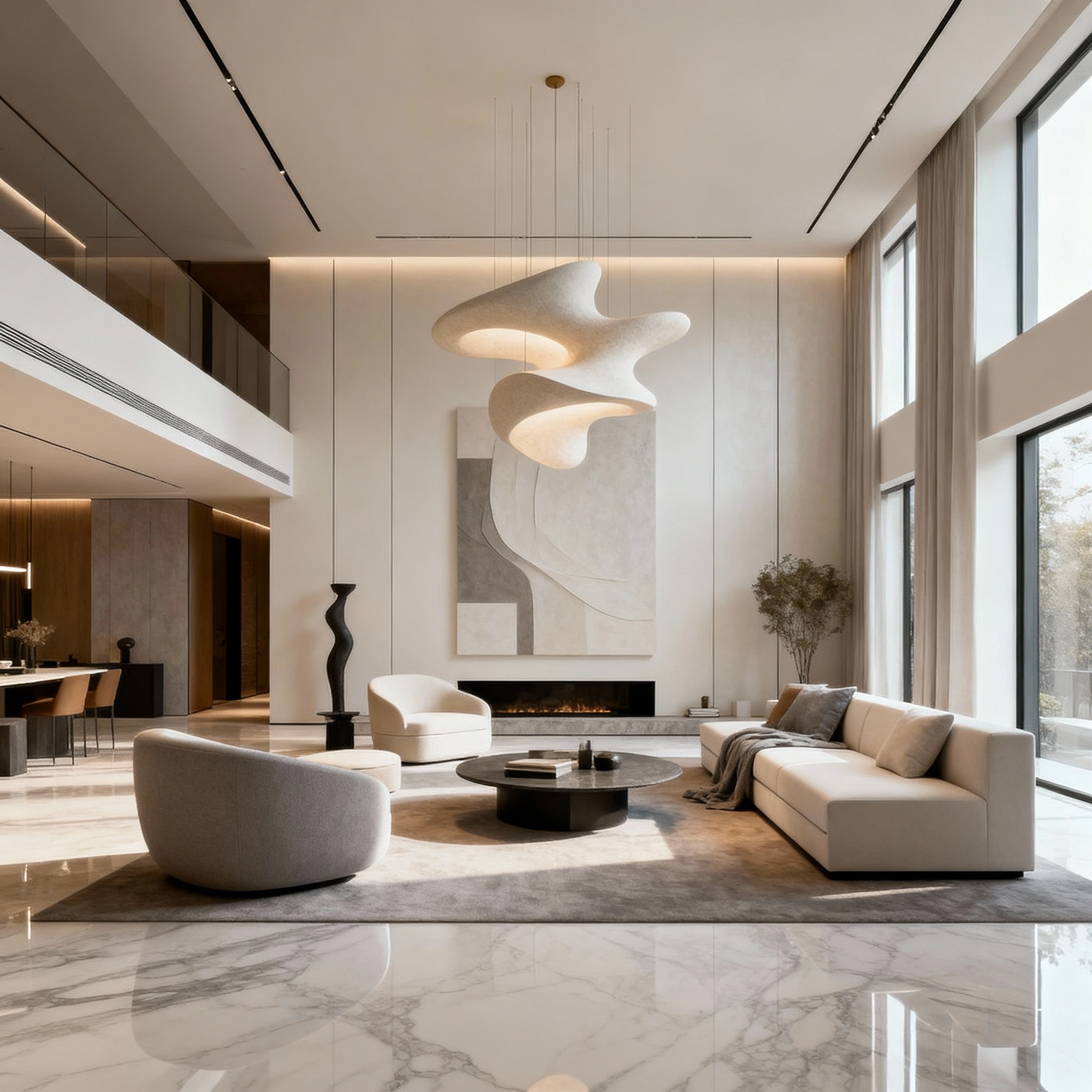
Kanye has moved around over the years, and his “home” has sometimes changed, depending on projects, legal issues, or design experiments.
-
He once bought a Malibu mansion in 2021 for about $57.3 million, designed by the Japanese architect Tadao Ando.
-
That Malibu place was stripped down: windows removed, interior finishes removed, plumbing/electric systems gone. It became an unfinished shell.
-
In September 2024, that property was sold by Belwood Investments for $21 million, far below what it had been bought for.
-
After that, he purchased a new mansion in Beverly Hills for $35 million. This mansion is large, features many bedrooms and bathrooms, and includes luxury amenities.
So, Kanye’s main base now seems more likely the Beverly Hills mansion rather than the Malibu shell, though he has had multiple properties and sometimes uses more than one.
Why Was Kanye West’s House “Destroyed”?
Many stories about Kanye’s Malibu mansion describe it as “destroyed,” “gutted,” or “abandoned.” What does that mean?
-
When Kanye bought the Malibu home (Ando-designed) in 2021, it was already a notable architectural piece.
-
Over time, Kanye removed interior fixtures, doors, windows, plumbing, and electricity. Effectively, he stripped the home down to its structure — concrete shell, basically.
-
The reasons seem to be artistic / visionary: he reportedly wanted to reimagine the space, maybe make it into his version of a “bomb shelter,” or a highly personalized place. Some reports say it was meant to be a bat cave, slides, reforms to living spaces, etc.
-
But the renovation stalled, and legal issues (lawsuits, unpaid contractors) cropped up.
Because of this, many people see the Malibu house as a cautionary tale: even big money doesn’t guarantee that things go smoothly.
The Tadao Ando Malibu Mansion: Art, Vision & Controversy
The Malibu mansion is one of Kanye’s most talked-about homes. It was built by Tadao Ando, a well-known Japanese architect, known for minimalist, sculptural designs, lots of concrete, light, and form.
What’s especially interesting:
-
The design is bold: concrete shell, lots of open space, ocean views, minimal distractions. It was meant to let architecture speak.
-
But Kanye’s radical changes (removing windows, etc.) brought criticism. Many saw them as extreme or even destructive. Some said they stripped out things that made the home habitable.
-
The sale to Belwood Investments was at a huge loss. Kanye had paid around $57.3 million; it was sold for $21 million with the interior nearly gone.
What Kind of House Is His Hidden Hills / Los Angeles Home?
Besides Malibu, Kanye’s homes include his Hidden Hills or Los Angeles area house. This home is more finished, more lived-in, and shows his design philosophy in full force rather than under construction.
-
The style is minimalist. He worked with Axel Vervoordt, a designer famous for serene, elegant minimal interiors. Kanye called one house “a futuristic Belgian monastery” when collaborating with Vervoordt.
-
The home has neutral colors, off-white plaster, and natural materials. Furniture is sparse but carefully chosen. There are open spaces, calm hallways, and natural light.
-
There’s talk of him embracing the philosophy of wabi-sabi — beauty in imperfection, in simplicity, in rawness. That means minimal clutter, things that age naturally, and less gloss.
Who Bought the $177 Million House in Malibu?
Sometimes people ask: “Who bought Kanye’s huge Malibu house?” Here are the details:
-
That specific Ando mansion he bought for ~$57 million was sold to Belwood Investments for $21 million in September 2024.
-
The buyer (Belwood), led by Bo Belmont, plans to restore it (some say “back to how it was” or even better). They have invested in plumbing, electrical, framing, etc., to bring it from shell status to livable.
So yes, the property changed hands. And plans are to restore rather than leave it gutted.
What Are the Unique Architectural & Design Features?
Based on what’s public, here are things that make Kanye’s homes interesting, special, and (in many cases) controversial:
- Architect & Designer Collaborations: Kanye works with renowned people (Ando, Vervoordt). This shows he cares about design beyond just flashy looks. He wants homes that say something.
-
Minimalist / Monastic Aesthetic: Sparse furniture, neutral tones, open spaces, natural light, raw materials like concrete and stone. Less on decoration, more on mood.
-
Bold Renovation Choices
Removing windows, stripping interiors, trying to reshape a structure. Some saw genius; others saw waste. It’s a gamble. Malibu home shows that. -
Philosophical / Statement Moves
Kanye has described homes with phrases like “monastery,” “futuristic,” and “wabi-sabi vibes.” He views his homes as artworks or spaces for self-expression and retreat, not just pads to live in. -
Controversy & Imperfection
Many design decisions led to criticism, legal issues (contractors unpaid, liens filed), and financial loss on properties. These are part of the story.
Personal Anecdotes & Observations
As someone who studies architecture and celebrity homes, I often wonder: What does it mean when someone buys a house, spends millions, then tears down what was working, only to later try to restore it?
-
Once, I visited a minimalist home in LA designed by a famous designer; the house had no art on the walls, no bulky furniture. It felt calm but almost empty. I left thinking: beauty in simplicity is powerful, but homes need warmth too. Kanye’s Hidden Hills house seems to balance that better than the Malibu shell did.
-
I remember waking early one morning and driving by a part of Malibu where the coastal view was breathtaking. I imagined living there: the sound of waves, fresh air, sunrises. A house on that coastline is special. But, I thought, it takes continuous care, design, and investment to make it both beautiful and liveable. The Malibu property, stripped as it was, lost many of those liveable comforts.
Where Did Things Go Wrong (and What Can One Learn)?
Kanye’s design journey is instructive. Here are some lessons drawn from what’s happened:
-
Vision vs. Execution: Having a big vision (renovating, designing boldly) is inspiring. But execution (contractors, permits, supply, maintenance) matters. In the Malibu case, removal of windows etc., left the home exposed to the elements.
-
Cost vs. Resale Reality: He bought for $57M, sold for far less. Sometimes “blank canvas” homes require a massive investment. Buyers and architects must factor in the cost of restoration, not just the purchase price.
-
Design Philosophy: Minimalism and art are powerful, but inconsistencies or extreme moves (say, removing basic systems) can hurt livability and value. There’s a trade-off between art and comfort. Kanye’s Hidden Hills home seems more balanced than the Malibu shell did.
-
Legacy & Rebuilding: The Malibu house’s story shows how difficult it is to undo radical changes. However, investors now buying it want to restore its architectural significance. That speaks to the idea that well-designed architecture has value beyond just property flips.
What He Has Bought & Built More Recently
-
The Beverly Hills mansion he bought in October 2024 for $35 million, which has about 11 bedrooms, 18 bathrooms, and includes amenities like a pool house, a padel tennis court, large swimming pool, etc.
-
This house seems more finished, more of a liveable space, rather than a radical project. It shows perhaps a shift from grand experiments toward comfort and functionality.
Unique Insights: What Kanye’s Home Choices Suggest
-
Kanye’s Homes Are Part Art Project & Personal Gallery
When one buys a house by Ando or works with Vervoordt, the home becomes more than a shelter. It’s a curated space. For Kanye, homes seem to double as statements about identity, philosophy, and creativity. -
Dichotomy Between Public Image & Private Utility
On one hand, grand, bold designs; on the other, many reports of impracticality, discomfort, and legal complications. It highlights tension: doing something extreme is inspiring, but daily living demands practicality. -
Resilience in Real Estate
Even when things don’t go as planned, architecture and location hold value. The Malibu property, even in bad shape, still found a buyer. Location by the ocean and architectural pedigree matter. -
Minimal Decor Doesn’t Mean Minimal Cost
Minimalism, artful materials, and high-profile architects cost a lot. Clean walls, bare floors, minimal furniture — those have a cost upstream. For many fans, it’s surprising how bare homes can cost huge sums. -
Privacy & Own Space
Kanye’s homes are often in gated communities, secluded sites, with views, and open land. Privacy seems important. Removing windows or making fortified designs may reflect his preference to guard his own space, especially after fame pressures.
Who Bought Kanye’s House?
-
As noted, the Malibu Ando house was bought by Belwood Investments for ~$21 million.
-
The Beverly Hills mansion was acquired by Kanye in a purchase via an LLC. That means ownership is somewhat private.
So while Kanye doesn’t own the Malibu shell anymore, he still owns or uses other properties and remains involved in architecture/design.
Why His Style Inspires and Divides
Kanye’s homes aren’t just pretty—they push people to think differently about what a home can be.
-
For some, the Malibu shell is too much: art over comfort, extreme over tasteful. For others, it’s brave: radical aesthetic moves, refusing to follow norms.
-
His Hidden Hills/Los Angeles home is less controversial, more admired as a blend of art, minimalism, comfort, and serenity.
-
The contrast between homes that are “liveable” vs. “experimental” is fascinating. It’s rare to see someone oscillate so publicly between those poles.
My Reflection: What I Learn From Kanye’s Homes
When I see Kanye’s houses, I think about my own home. What things matter most: comfort, beauty, art, but also how I live day to day. I remember once visiting a minimalist artist’s studio home — cold in some ways, but so inspiring. I left thinking: maybe the heart of good design isn’t filling space, but choosing what you love, and letting silence, space, light work for you.
Kanye’s houses show that ambition can lead to bold design, but also that bold design needs care, upkeep, and sometimes compromise.
Final Thoughts: The Mansion, the Myth, the Home
Kanye West’s homes are never just homes. They are myth, experiment, statement, and often, a cautionary tale.
-
The Malibu Ando mansion shows that architecture and vision, while powerful, need constant tending. Even great designs become fragile when stripped of basics.
-
His Hidden Hills / Los Angeles minimalist homes show what harmony between art, function, and comfort might look like.
-
His recent Beverly Hills purchase suggests maybe a turn toward more stable, finished living spaces, rather than radical projects.
For anyone curious, Kanye’s houses say: Home is where your philosophy lives. If you believe in art, minimalism, and architecture as expression, then home becomes part of your message.
They also say: your choices have a cost. Beauty, comfort, privacy—they’re expensive in material, emotional, and financial terms.

